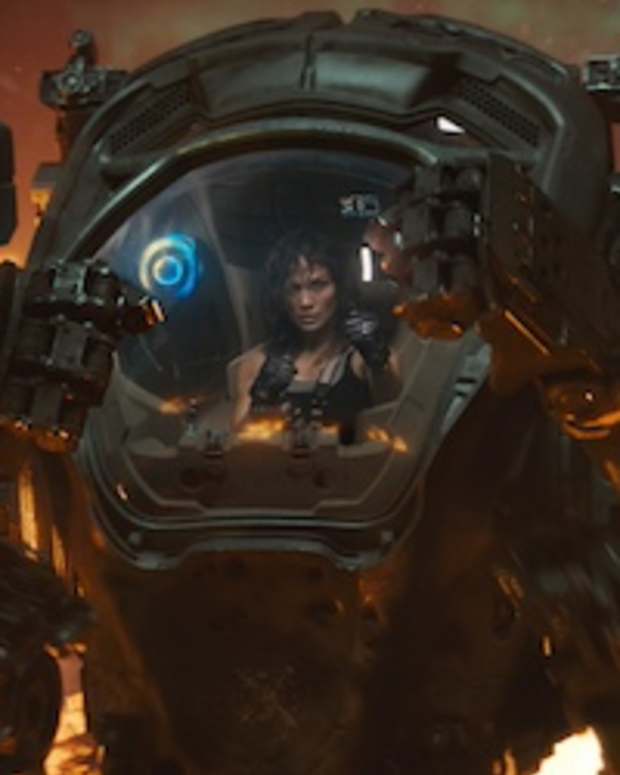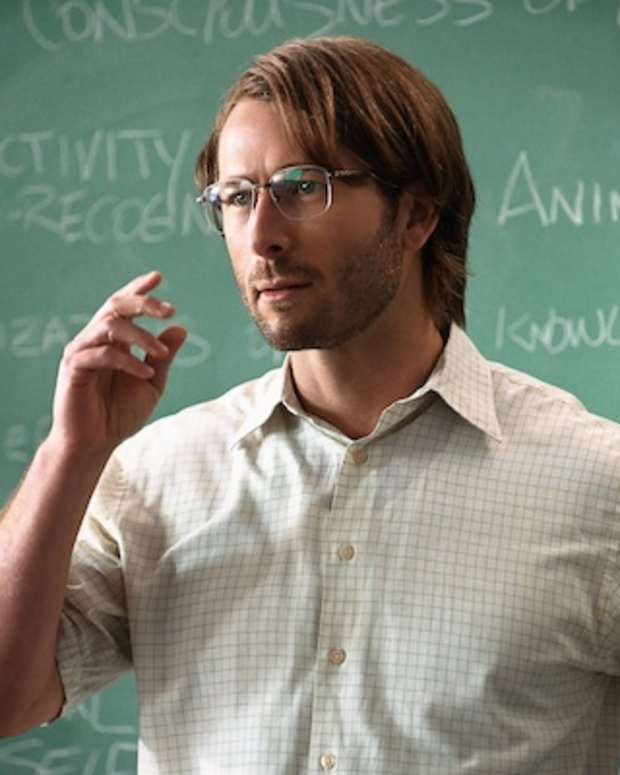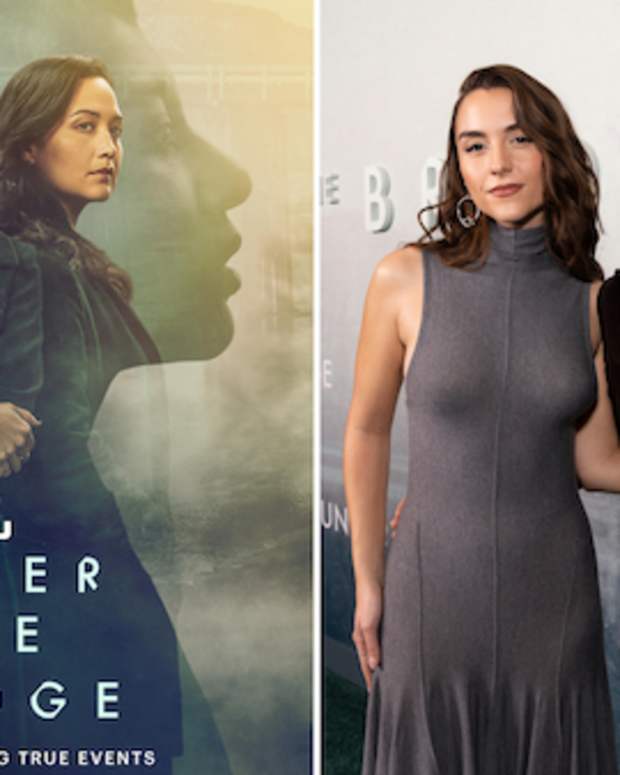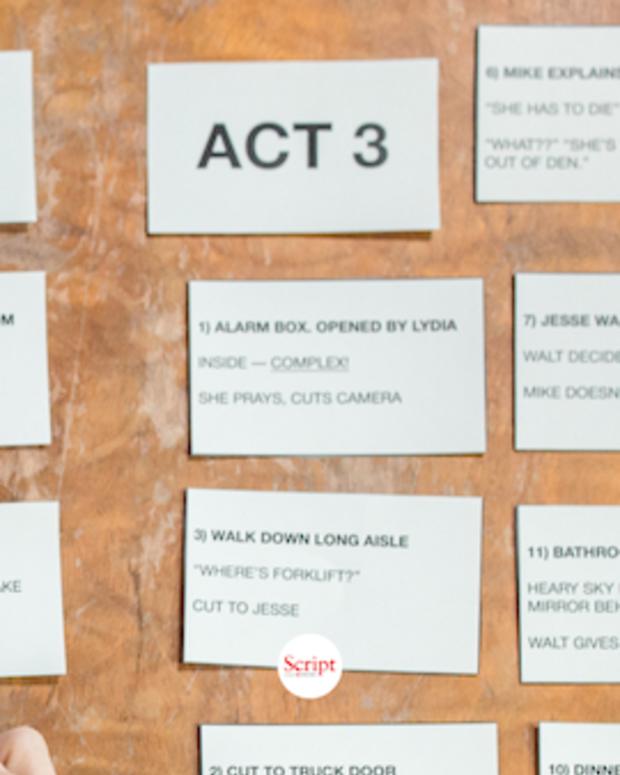Sublime Storytelling: Screenwriter Tab Murphy on his Foray into Documentary Film
Kangaroo Valley. Courtesy of Netflix. A young joey kangaroo named Mala discovers a magical yet dangerous world outside her mother’s pouch, but must learn what it takes to survive her first year and beat the odds. She'll meet new friends in this hidden valley, but she'll also have to avoid many foes. As Mala masters her wobbly legs, and overcomes her fears, the biggest lesson she'll learn is how to be herself.
Our expectation of Nature Documentaries is that they will be educational and enlightening, but Kangaroo Valley, created and directed by Kylie Stott, and written by Tab Murphy, embraces what we love in compelling narrative. Fusing Tab’s storytelling talents with his passion for the great outdoors, this film is certain to entertain, as well as keep you on the edge of your seat. It leaves you feeling that you’ve traveled to this magical hidden habitat, and have been given a glimpse into the intricate interdependency of its denizens. I came away with a heightened understanding of the universal drive for survival and a sense of hopefulness.
Tab grew up with a love of the wilderness. He studied forestry and wildlife biology before transferring to the USC Film School to pursue directing and screenwriting and has been a working screenwriter since 1983. His major break occurred with a writing credit on Gorillas in the Mist, for which he received an Academy Award nomination. Tab went on to write some of the most beloved contemporary Disney animated movies including The Hunchback of Notre Dame, Tarzan, Atlantis: The Lost Empire and Brother Bear, which was nominated for an Academy Award Best Animated Feature. To date, his Disney animated feature films have earned well over a billion dollars worldwide. He has written projects for Dreamworks and Warner Bros, including the DC animated direct-to-DVD features Superman/Batman: Apocalypse and Batman: Year One, based on the Frank Miller graphic novel. He also wrote nine episodes of the animated Thundercats re-boot for Warner Animation. Tab wrote and directed the feature film Last of The Dogmen, starring Tom Berenger and Barbara Hershey, a love letter to his passion for Native American culture. The film was recently restored and released on Blu-Ray.
With decades of screenwriting credits under his belt, Tab merges his storytelling talents with his passion for wild and untamed places, elevating the Nature Documentary genre.
I was first introduced to Tab’s work in the late 1990s. To this day, he maintains the same representation, and remains approachable and eager to talk with aspiring writers. He divides his time between Los Angeles, Jackson Hole, and the wide-open spaces of the Canadian Rockies. I was lucky enough to catch him just before he hit the road to learn how he became involved in the project, and the unique, collaborative process in sculpting footage into story.
This interview has been edited for content and clarity.
Barri Evins: The beauty and the finesse of the filmmaking here is outstanding, but for me, the strong story is what really elevates Kangaroo Valley, even over other popular nature documentaries that have narrative elements. The compelling story and the engaging characters are the focus, and it makes the film both entertaining and captivating.
Tab Murphy: That’s a big part of what the process was for us. Kylie Stott wanted to tell a story that was more of a narrative than a straight documentary on kangaroos. She wanted to engage the audience. Kylie had the idea about telling the story of a young female joey, from the day she left her mother's pouch through her first birthday – which is the most dangerous time in a kangaroo’s life. She had written a script that in her mind was “If we could get this footage...” But it was a very conscious choice from beginning.
Barri: How did you get involved?
Tab: Kylie loved the Disney films, mainly the ones that I had written, and that is one of the reasons she reached out to me. She said, “I’m doing a documentary on kangaroos,” and my response was, “I’ve never written narration for a documentary.” She explained that she was doing something different, and really hoped I would come aboard. She wanted to tell a story that was very much in the vein of Disney stories, but still a documentary. It would have more of a narrative drive that most other docs. And I thought that was really intriguing.
Barri: Even with the the wide range of projects you’ve done from the Disney and DC universes, spanning true stories to animation, as well as working as a director, this is still moving into new terrain for you.
Tab: For me personally, as a writer, it was a very different project, which was exciting. I've had a long career. I've written screenplays and teleplays, but I've never been in a situation where there is an idea for a film but basically you have all this footage that you have to then go through and see what supports the narrative story you're trying to tell. It was a really interesting experiment for me. It was a terrific experience. I am so proud of this film and of the work everyone did on this, in the sense that I just got to participate.
Barri: It seems unusual to see a screenwriter shift to work in a completely different medium.
Tab: It is and it isn’t. This is unusual in the approach and the process, but it isn't unusual in terms of what I love, because I love natural history. I grew up in the wilderness and camping and fishing and backpacking, and I love wildlife. Gorillas in the Mist was so in my wheelhouse. I went to Rwanda and became friends with wildlife cinematographers. I really admired those men and women that were willing to go out into the field and endure whatever privation they had to in order to get the shot. Not only do they have to work under extreme conditions at times, whether it’s climate, or harsh terrain, but they also have to – in a moment – capture something special. They build their reputation on getting those moments. I have nothing but admiration for the cinematographers on Kangaroo Valley, and the hundreds of hours of footage that they got.
Barri: I was very impressed with this visually. It's stunningly beautiful and we feel immersed in the environment. How did you get involved?
Tab: Kylie reached out to me through my agents. I’ll never forget it because I was in Jackson Hole, and I was halfway through a hike. I was just sitting and watching the scenery, and I get this call from my agents at Gersh saying, “Hey, this director has asked if you'd be interested in writing the narration for her documentary on kangaroos.” I said, “Sure, I love natural history. Let’s at least go down the road and see what that entails.” Because I really hadn’t done anything like that in the past. So that’s how it began.
[Documentaries Use Scripts, Too]
By that point, Kylie had two seasons of cinematographers in the field, and was going to accompany them for the final season. She was six months pregnant and living in a tent in this beautiful valley with a bunch of guys. It’s just incredible footage, with camera movements, dolly shots, helicopter, and drone footage. It’s spectacular.
Barri: I understand what you’ve said about Kylie having a vision for a narrative from the outset, but documentary story comes from the footage.
Tab: When you have a vision, and you've even written a script with the hope that these events could be filmed – in a natural way by the way, not coerced in any way – ultimately it doesn't matter what you write because, at the end of the day, you’re a slave to the footage that is shot. You have to see if you can find footage that supports the narrative story you're trying to tell.
One good thing that they had going in, they knew where this special valley was where there was an abundance of kangaroos. They also knew the Black Forest was there, the dingo packs were there. There were characters and drama already happening. The dingos would hunt the kangaroos, and many dingo target weak, young joeys. The story Kylie came up with was already supported in many ways by the location she found, and the inhabitants within that location.
Barri: The location is magical, almost mystical, although it is grounded by the strong sense of the kangaroos as a society. The Black Forest sounds as if it is a creation straight from a Disney film. It is revealed to be both ominous and magnificent.
Tab: Kylie was very forthright about why she wanted me. She wanted me to bring that Disney magic to that story as much as I could. And having written four of those movies, I know what that means. Most of what the Disney Magic is about is creating emotion in whatever you’re watching.
Barri: What was the process of working on this like for you?
Tab: Kylie and I got together after I had gone through what she had written, and she talked about her goals. I told her I thought the story was terrific, but if she could get certain kinds of footage over the next three months, I thought she could really enhance a good story. We went through the script, and I gave her as many ideas as I could, and then she went off to shoot.
I came back onto the project five months later. By that time they had finished shooting. They had gotten everything they could in terms of the budget. This next step, working with the creative team, Kylie and producer, Adam White, was where things got really fun and interesting and creative for me. We had the essence of the story that Kylie wanted to tell, and the other characters in the valley – wombats, koalas, and eagles. Then we had to think, “Who can we make into additional characters?” Obviously, we had Mala, and Lowana, her mother. We had the bouncing boy joey, Buru. He was just a hoot, when they could spot him. He was constantly racing about, flat out full tilt boogie!
I told Kylie, “What Disney does is create characters.” You have a main character whose journey we’re going to go on, but you have comic relief, you have danger. We had all that in terms of the dingoes hunting the kangaroos.
What became important was really nailing down the characters.
Who could be a character?
Warren the Wombat was an easy choice to be a character in this story.
Barri: And he adds such delightfully unexpected humor!
Tab: Exactly. I was looking for that stuff!
The creative team talked about the story. We all threw out ideas. I personally know about dingoes. I know that they've been vilified. I know that they've been persecuted, hunted, trapped, eradicated, wherever they were found in Australia. I said, “You know they're just being animals. They're just being themselves. And yet they have this terrible reputation. Maybe there’s an opportunity for us to show them in a different light. Yes, they hunt, and yes they kill, but maybe there’s a young dingo we can follow in a parallel story with Mala. And maybe their stories can converge at the very end.” That became Miro’s character. I think this perspective on Miro’s story was a real turning point. Kylie really jumped on the idea.
Barri: What were some of the challenges in this process?
Tab: Every time we came up with an idea, the footage had to be there, already shot, that would support that idea. There was no going back and doing reshoots. Often times, I would come up with an idea, or Kylie or Adam would come up with an idea, and then they would have to search the footage. As I was giving ideas about what could happen, or how it could look, or how we could build tension – it had to be supported by footage. That was the difference between just writing a script and then having actors act it out. It was almost doing it in reverse. You had ideas that you're hoping would complete the narrative, but if you didn't have the footage, you had to jettison the idea.
Barri: Completely different from traditional writing, but managing to achieve the same results. You and the entire team were so successful in this. I loved many aspects, but as an admitted “storyaholic,” within the first ten minutes – without giving anything away – this grabbed me. There was a distinctly cinematic narrative structure and feel, much as we encourage aspiring writers to begin their scripts. I didn’t expect a documentary to keep me on the edge of my seat!
Tab: I appreciate that, but a lot of that credit goes to Kylie's vision. She's Australian. She wanted to make a documentary of kangaroos. But she really wanted to tell an engaging and an emotional story, not just a straightforward, “Here’s a kangaroo doing this and that.” This is what was so exciting to me when I was invited to come aboard. I saw documentaries – at least this one – in a whole new way.
I could become a storyteller in a documentary in a way I had never seen before, except for some of those old Disney, true-life adventure documentaries from way back when I was a kid. But that's why it was so much fun, and why there was so much excitement as we were putting the story together.
You come up with a good idea, and then “Eureka! We do have that footage, we can do that!” That’s just so exciting.
The other part of that process that I want to shine a light on is the editors who put all that footage together and would find those shots.
Barri: I can imagine the vast amount of footage and working to tease the story out of that.
Tab: Those editors are just as much storytellers as we were. I don’t want to speak for them, but my guess is, ultimately, because of the narrative drive, and because we were going for emotion in certain scenes, and as it was critical that we have a certain shot as part of the story, they were cutting it more like a movie than they were a documentary. They would tweak scenes, look for shots that would support the idea, and bring out emotion in the way they put the footage together. It was amazing. I was just knocked out. It’s one thing to do a straight documentary where you’re showing a more scientific approach to the study of whatever it is you’re documenting, but these guys had the additional task of telling an emotional and engaging story. I think they just completely pulled it off.
Barri: Everything we consider to be classic cinematic structure and the narrative elements that we crave in story is seamlessly interwoven in Kangaroo Valley. A unique world. Dimensional characters with flaws and arcs. Riveting conflicts with escalation. Tension and suspense. Twists and stakes. A ticking clock. An utterly gripping midpoint! A touch of comic relief. There are chases and battles. The build to a heart-pounding climax. The resonant theme truly elevates this within the genre. I can think of few Nature Documentaries that I would eagerly watch again, and I’ve watched this twice – so far – I can't wait to watch again with my nephew! You and the team have incorporated what we love most about storytelling in this documentary.
Tab: I totally agree; I’m just thankful that I got to be a part of that process. There were so many talented people on board. It really starts with Kylie's passion to tell this story in a different way, and translating that passion to marching orders to the cinematographers in the field. I’m really thrilled. I haven’t had a credit like this ever in my career, so I'm really proud of it. I'm excited for it to premiere, and for people to see and experience it.
You ticked off all the things we look for in great storytelling, but the added thing in this piece is that there are just moments of beauty, of nature just being nature, where you just go “Wow!” For instance, I didn't know kangaroo hopped in the snow before this documentary. A lot of cool stuff that people may not even associate with kangaroos. I think they're going to be blown away.
Barri: The characters are truly engaging. And there is comedy and even a touch of romance! I think this must be your influence.
Tab: If it wasn't already there, I probably brought some of that to the table. Kylie is very smart and perceptive. We talked things over, and we battled back and forth until we came to something where we both just thought, “Oh this is great!”
There are two processes here. There’s the story that you’re telling, and then there's the narration that supports that story. We were working together on the story, and then we worked together on writing the narration. “What's the best way to say this?” Sometimes she would say, “Give me something Disney here!” and we would laugh. Then I would do it, and she loved that kind thing. I got to uncork my Disney – whatever it is in me – that I haven’t used in quite a long time, so that was fun as well.
We knew we were making a story for family audiences. They had some brutal footage and just thought, “Do we really want to go here? No we don't.” I think it's implied enough, and people understand that the stakes are high in this valley. We certainly tried to outline that between the two characters of Mala and Miro.
Barri: I thought it was deftly handled. It was just the right touch so we understand the life-and-death stakes, but it smoothly avoided crossing the line.
Tab: We didn’t want to have kids crying! But we wanted them to be engaged, and to have a stake not only in Mala’s survival and her story, but in Miro’s as well. I’m particularly proud of that because I initially said, “Let’s not vilify dingoes. They’ve been vilified for centuries in Australia already. Let’s present them as a species doing what they have to do to survive too.” We were able to mirror the stakes in Mala’s journey with the stakes in Miro’s journey. If he doesn’t learn how to hunt, he’s going to starve to death. He won’t support a family. I thought we really got some pathos as his story progressed.
Barri: I was struck by how the narration brings both those stories to a close, and how you made us empathize with the dingo despite being a villain here. It gives this added depth and resonance in the end that underscores the larger message for both characters who are part of the same ecosystem.
Tab: Yes, exactly. The whole journey of Mala making it through her first year outside the pouch was something we built towards. Some of that end narration, I’m really proud of. We really tried to hit the emotional as much as we could with the narration, but in a spare way.
Barri: The piece has a thematic richness. I remember you speaking with my Screenwriting Elevated Seminar students, and can see why you were drawn to take on this new writing challenge.
Tab: Yes, that was fun.
Barri: I always ask only one question, and then step back and give students a chance to interact with the writers. And, of course, my question goes to personal thematic. “What kinds of conflicts, dilemmas, debates, characters or themes are you drawn to in your work, time and again?” Your response was staggeringly eloquent for being off the cuff. And you didn’t hesitate for a moment. You said:
When you get a chance to do what you love to do as a writer, especially in screenwriting, where you can come up with any story and write it – obviously the business is changing – but when I broke in in 1983, it was wide open. You really could dream up a story and write anything you were passionate about. That’s how I approached it. When you do that, you tend to draw from “what made you.” Whether it's things you were drawn to as a child – what molded you. Things you watched as a child, what stories you read at a young age, what you did with your free time. All of those things combined, at least for me, to create a theme that I find runs through a lot of my work, which is man or woman’s place in nature, or man or woman against nature. Mainly it’s our relationship with nature. I’ve always explored that theme. It’s apparent in Last of The Dogmen. It’s apparent in Gorillas in the Mist.
Barri: Drawing from “what made you” is a valuable lesson for screenwriters working to break in. You spoke about your childhood experiences, and your deep love of the outdoors and wild places. “That’s essentially what turns me on thematically in storytelling." This piece is a perfect match for the themes that have shaped and driven your work over the course of your career.
Tab: Yes! It hasn’t changed.
[Note: Read more from Tab and other A-List screenwriters on the themes that drive their work here.]
Barri: I doubt Kylie could have known this in advance, but she brought you the perfect project. An opportunity that was both unique to your previous writing experiences and hits the bulls-eye in being resonant for you personally.
Tab: Absolutely! I would have loved to go to Australia and be on location. There is something about that which is absolutely thrilling. Being around guys who are in the field, often alone, all day trying to get footage. But I did get to experience it through the lens of what they shot. So I feel in some ways I know this valley. I’ve been there. I know the inhabitants. All through the lens of a camera. I think being able to take that experience and turn it into a narrative that other people can now experience was something that was new to me in terms of its process, but just as thrilling as watching your script pages being shot on location.
Honestly Barri, I’ve been doing this for forty years. By this time, there isn’t much that I haven’t experienced in some way, because I have written a variety of things in my career. But this was fresh and new, and it excited me. And we’re going to do another one! There’s no specific idea yet, but we’re keeping the team together as we had such a great and collaborative time together. I’ve been up in Jackson Hole and Kylie and the producer came up. We just sat and batted around ideas and we came up with some really good ones! So I think you will find us all working hard again on something new in the next year.
Barri: I’m delighted that you're going to collaborate again!
Tab: The people associated with this, from the director, the producer, to the editors, and the cinematographers, we all share a passion for wild places, and wild things, and our planet. That is the real connective tissue that brought us together. I’m excited to see where we go from here in terms of our next project, but I am “full tilt boogie” in!
AMPLE Nature's Kangaroo Valley is available on Netflix on December 14, 2022.


















![[L-R] Omar J. Doresy and Sebastian Maniscalco in Bookie (2023).](https://scriptmag.com/.image/ar_8:10%2Cc_fill%2Ccs_srgb%2Cfl_progressive%2Cg_faces:center%2Cq_auto:good%2Cw_620/MjA2NjY1MDM3NzA2Njk5OTgw/omar-j-john-johnsonmax.jpg)



